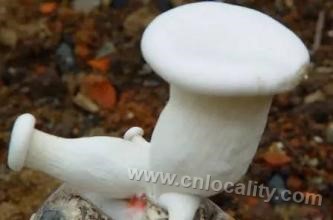welcomeSpecialty Foods Products!

Pleurotus nebrodensis is a specialty of Pingshan County, Shijiazhuang, Hebei Province. Pleurotus nebrodensis is also known as Pleurotus eryngii, Pleurotus eryngii, Pleurotus ferulae, Pleurotus ferulae, Pleurotus eryngii, Pleurotus eryngii and Pleurotus eryngii. Pleurotus nebrodensis is tender, delicious and has high edible value. It is known as "Boletus on the grassland" and Pleurotus ostreatus, and is favored by consumers. Pleurotus nebrodensis is rich in nutrition. According to scientific determination, its protein content accounts for 20% of dried mushrooms, and it contains 17 kinds of amino acids, vitamins and inorganic salts. Pleurotus nebrodensis also has certain medical value, which has the effects of digestion elimination, insecticidal, antitussive, anti-inflammatory and gynecological tumor prevention. Pleurotus nebrodensis has high medicinal value. It contains fungal polysaccharides, vitamins and other physiologically active substances and a variety of minerals, and has the functions of regulating human physiological balance and enhancing human immune function. Nutritional requirements) Pleurotus nebrodensis is not demanding on nutrition. All sawdust, cottonseed hulls and corncobs of broad-leaved trees can be cultivated, and the nitrogen fertilizer is mainly wheat bran and fresh corn flour. The ratio of carbon to nitrogen in the production stage of Pleurotus nebrodensis is 25: 1 to 40: 1; The ratio of carbon to nitrogen in the reproductive stage is 70: 1 to 200: 1. Mineral elements can be added with lime, gypsum and phosphate fertilizer. In Jixian area, the mother seed and original seed are usually produced from May to June, the cultivated species are produced in July, the mushroom sticks are produced in August, and the mushrooms are produced from November to April. The general biological efficiency is 40% to 60%. The second tide mushroom is rare, and the mushroom shape is also poor. However, the biological efficiency of the mushroom covered with soil is 80% to 90%. Although the mushroom grows big, its quality is poor. Temperature Requirements Pleurotus nebrodensis is a low-temperature mushroom, and the mycelium growth temperature is 5℃ to 32℃. The optimum temperature is 22℃ to 25℃, the growth is slow below 5℃, and the mycelium stops growing at 35℃ to 37℃. It takes 30 to 45 days for the mycelium to reach physiological maturity, which is generally controlled between MINUS 3℃ and 15℃. The optimum temperature is 7℃ to 12℃ before the fruiting body can differentiate, and the growth temperature of the fruiting body is 3℃ to 22℃, and the optimum temperature is 13℃ to 18℃. It takes about 110 to 130 days from making mushroom sticks to harvesting. It takes about 8 to 15 days from mushroom bud to harvest, and the mushroom production time in Jixian County is from late November to March of the following year. Water content requires that the ratio of feed to water in the culture medium is 1: 1 to 1: 1.3, the water content of the culture medium is 65%, and the relative humidity of the air for the growth and development of Pleurotus nebrodensis is 85% to 90%. If the relative humidity is too high, yellow mushroom will appear. At the low temperature of 6℃ to 7℃, when the air humidity is too low, the cap often cracks. The water content of Pleurotus nebrodensis is small, and it can be kept below 15℃ for about 14 days after picking.
Reprinted with attribution:
https://cnlocality.com/(Chinese Specialty Products)
other
consult:(+86)13225231905